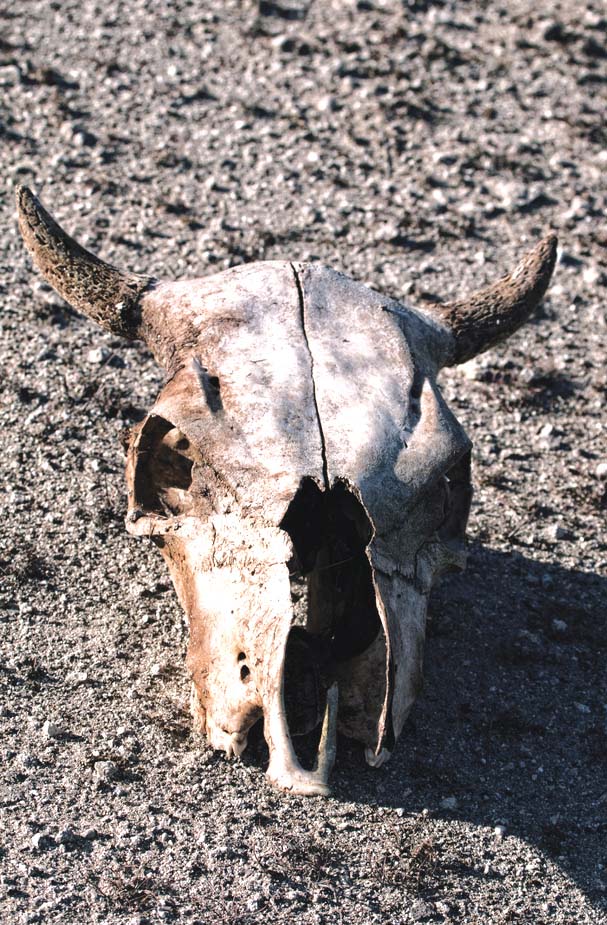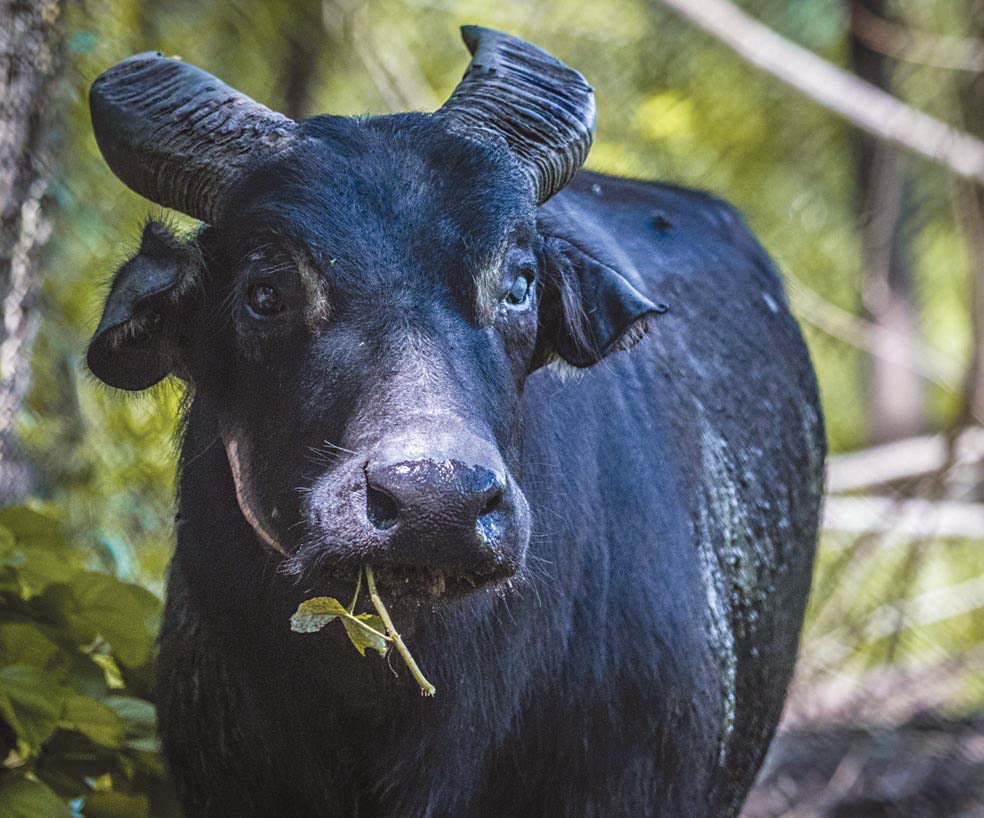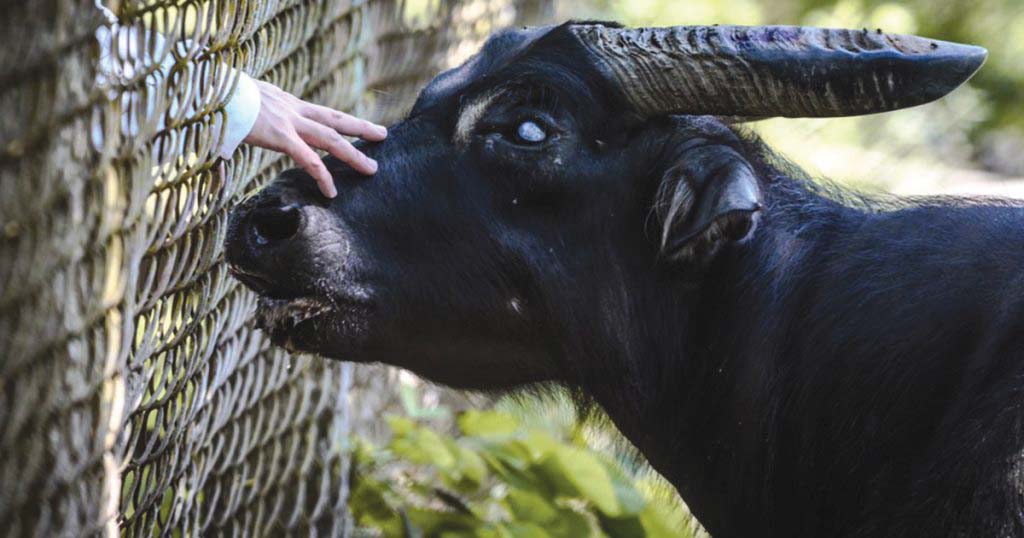Do a quick search online for the “national animal of the Philippines” and you’ll likely get mixed results: the Carabao (Bubalus bubalis carabanesis), the Tamaraw (Bubalus mindorensis), and the Philippine Eagle (Pithecophaga jefferyi).
Of the three, only the latter two are endangered and have been recognized by Presidential proclamations as important to local heritage. However, between the Tamaraw and the Philippine Eagle, it could be argued that the latter tends to get more airtime on the news, leaving the world in the dark about the most endangered Buffalo species.
So, what do we really know about the Tamaraw, and has their population improved since Proclamation No. 273?
A DECADES-LONG MOVEMENT
In 2002, then-President Gloria Macapagal-Arroyo declared the month of October as a “special month for the conservation and protection of the Tamaraw in Mindoro” through Proclamation No. 273.
The tamaraw — also known as the Mindoro Dwarf Buffalo, Timaraw, or Tamarau — was already considered a critically endangered animal facing “a high risk of extinction.” Being a species endemic to the Philippines, specifically in Mindoro, the proclamation called on the State to protect and conserve the Tamaraw as both a “biological resource” and as a reminder of national values.
While the month of the Tamaraw is still observed annually, the proclamation was written to urge the people of Mindoro and their government agencies to initiate activities for the species’ conservation. Everyone outside of Mindoro would only be encouraged to support them.

Today, there exists much confusion about the Dwarf Buffalo: There are at least 31,000 search results online explaining the difference between the Tamaraw and the Carabao.
With only around 600 Tamaraw left, it’s high time we learn about the species before they completely disappear.
FROM 10,000 TO 600
In October of 2022, Alexa Basa’s article in the Manila Bulletin reported that there were only around 600 Tamaraw left, with 480 residing in Mounts Iglit-Baco Natural Park, a protected ASEAN Heritage Park. It’s a far cry from the 10,000 Tamaraw thought to have existed in the 1900s.
According to an October 2022 Inquirer.Net article written by Kurt dela Pena about Tamaraw extinction, the species’ population has mainly been decreasing due to human activity: hunting, poaching, and habitat destruction related to farming. Over the past two decades, oriental Mindoro has lost almost 600 hectares of forest. At the same time, Tamaraw continue to be hunted despite efforts to conserve and protect them.
The Manila Bulletin notes that an outbreak of the Rinderpest viral disease, also commonly known as “cattle plague,” claimed a few Tamaraw lives in the 1930s. Though cloven-hoofed animals such as Goats can catch Rinderpest, the disease isn’t as fatal as it is among Cattle and Buffalo.

According to the World Organisation for Animal Health, Rinderpest
was declared officially eradicated in 2011. Its eradication marked only the second time a disease was declared officially eradicated following the eradication of Smallpox in 1980.
Now that Rinderpest is out of the way, it’s become more debatable whether human intervention is a boon or a bane.
AGAINST POACHING
The need to protect Tamaraw from poaching has existed for almost a hundred years. We know this thanks to the 1936 Commonwealth Act No. 73, “An Act Prohibiting the Killing, Hunting, Wounding or Taking Away of Bubalus Mindorensis, Commonly Known As Tamaraw.”
One would only be able to kill, hurt, or take away a Tamaraw either to protect themselves or their property or to conduct scientific activity as authorized by the Secretary of Agriculture and Commerce at the time.
While poaching has continued since then, an August 2020 article by Rappler suggests it might’ve gotten worse during the pandemic.
On August 28 of that year, three armed poachers were caught drying Tamaraw meat inside Mounts Iglit-Baco Natural Park. Though their Tamaraw tapa or Buffalo bush jerky were confiscated, the three poachers ended up escaping. Tamaraw Conservation Program Head Neil Anthony del Mundo said, “Poachers might be using the COVID-19 lockdown as an opportunity to illegally enter our country’s protected areas and hunt animals.”
According to a 2021 Pressenza International Press Agency article by Mona Gonzales, rangers and wardens normally aren’t armed; instead, they have cameras and binoculars. Budget cuts during the pandemic also affected staff salaries and led to the transfer of several rangers.
Living with a lack of human protection, the Tamaraw were left even more vulnerable to humans.

(Gab Mejia/Manila Bulletin file photo)
THINKING ABOUT THE TAMARAW
Every year, the Tamaraw is remembered and celebrated in October with a theme. In 2021, the Department of Environment and Natural Resources’ Biodiversity Management Bureau decided on “Tamaraw atin ito! Ipagmalaki mo bilang Pilipino,” encouraging Filipinos to be proud of the Tamaraw. The month-long event featured a Tiktok dance contest, documentary showings, virtual lectures, exhibits, podcasts, and even a painting contest.
In 2022, the month’s theme was “Tamaraw na Tinatangi, Pamana ng Lipi” (Revered Tamaraw, Our People’s Legacy), emphasizing the need to protect the Tamaraw in relation to the Filipino people.
According to the Global Wildlife Conservation in 2018, even the National Tamaraw Conservation Action Plan makes the link between the Tamaraw and Filipino pride in its vision statement: “By the year 2050, the Tamaraw, a source of national pride and a flagship for Mindoro’s natural and cultural heritage, thrives in well-managed habitats and populations that co-exist with indigenous people across Mindoro.”
Though only a handful of us will ever get to see the Tamaraw on the ground and protect them as the rangers and wardens do, it’s worth wondering whether the Filipino people would be able to promote their conservation without linking their worth to the country’s heritage or the species’ endemic status.

(Gab Mejia/Manila Bulletin file photo)
HOPE AFTER KALIBASIB
In 2020, World Wide Fund Philippines announced the death of Kalibasib, the last captive-bred Philippine Tamaraw. He was 21 years old.
According to ABS-CBN, Kalibasib, also known as Kali, was short for “Kalikasan Bagong Sibol” (Nature Newly Sprung).
While Kali’s death was reason to mourn, it also shed light on the difference between Tamaraw bred in captivity and Tamaraw living beyond Mounts Iglit-Baco National Park, of which there has yet to be an official census.






